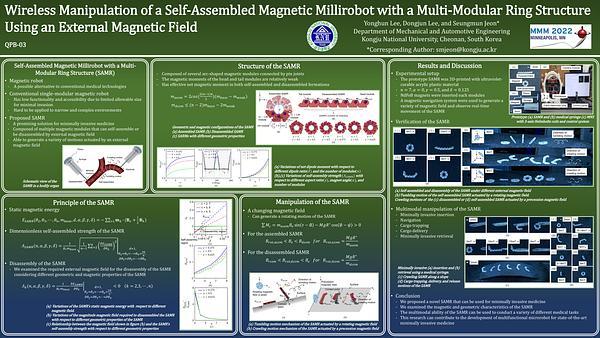Would you like to see your presentation here, made available to a global audience of researchers?
Add your own presentation or have us affordably record your next conference.
Magnetic fluids have a unique combination of magnetic properties, fluidity and colloidal stability, which has allowed them to find applications in a variety of technical
devices, such as shock absorbers and sensors. One of the features of this smart material is the ability to control its physical properties using various combinations of magnetic influences. In
this work, the dynamics of a magnetic fluid volume levitating in an uniform magnetic field of an electromagnet undergoing oscillatory shear is investigated. The samples with different
physical parameters were considered, the dependence of magnetoviscous effect was investigated. It is shown that the microstructure of the sample and the presence of large magnetic
particles have the greatest influence on the dynamics of the magnetic fluid undergoing oscillatory shear and magnetoviscous effect. The results of the work can be used to develop a method
for express testing of magnetic fluid samples, as well as to develop acceleration and vibration sensors based on magnetic fluids 1.
The dependences of the viscosity for samples MF-1 – MF-4 are plotted, shown in Figure 1. The obtained dependences of the viscosity show an increase in its value by a factor of 5 for the
MF-1 sample, with an increase in the field to 1000 kA/m, which can be explained by interparticle interactions and the formation of weakly bound aggregates in the near-wall layer in a
more concentrated initial MF-1 sample. In a more diluted sample MF-2, such an increase in viscosity is not observed. The images MF-3, MF-4 are characterized by the presence of an
excess free surfactant, which negatively affects the magnetoviscous effect.
The work was carried out the part of the implementation of the program of strategic academic leadership "Priority-2030" (Agreements No. 075-15-2021-1155 and No. 075 -15-2021-1213)
and as part of the implementation of the state task (No 0851-2020-0035).
References: 1. Ryapolov P. A., Polunin V. M., Shel'deshova E. V, JMMM 496, 165924 (2020).

